J.A. Jackson
overview
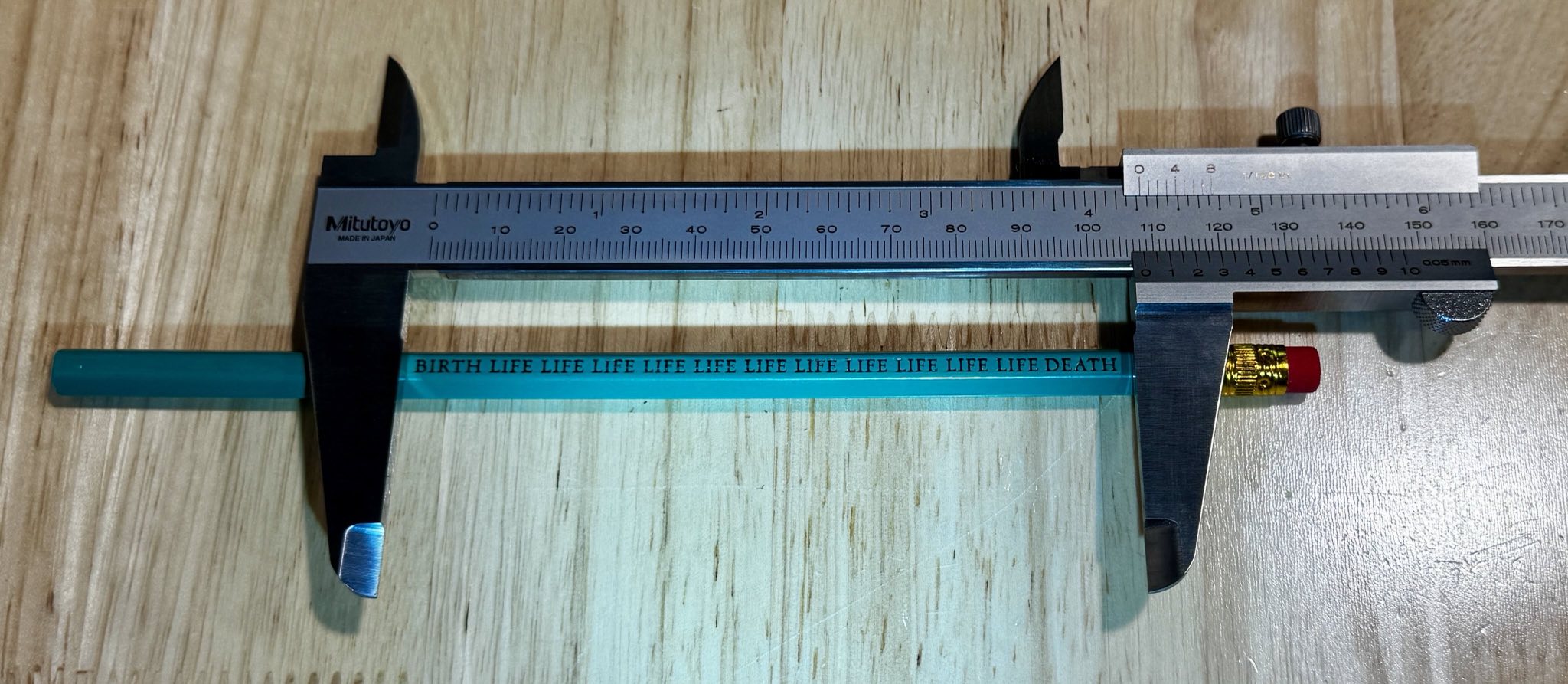
This is the second iteration (v2.x) of a bicycle I made in 2023, improving upon a number of issues logged over the course of the last year, and allowing the frame from the previous project to be reused in another (future) bicycle build.
It is a titanium-framed road/touring cycle with an internally geared rear hub of eight speeds. It has a number of features atypical of road/touring cycles, such as track dropouts, both disc and rim brake mount points, threads for all manner of fenders, racks, and accessories, clearance for wider wheels, clearance for fenders, a rear quick-release hub space of 135mm, and a tapered headset tube. If you look “off the rack” for this combination of things, you simply won’t find such a bike. Thankfully, I can make one.
v1.x of this bike used a frame from Habanero Cycles, the “Team Issue Nuevo”. It was excellent. If you want a bike similar to this one, but don’t want to design your own frame or DIY as much on the components, talk to Catherine at Habanero, she can make a bike like this for you easily.
The name of the bike comes from a Joycean description of a Trinity College bike race, and is given to whichever bike I ride primarily at the moment:
“Bang of the lastlap bell spurred the halfmile wheelmen to their sprint. J. A. Jackson, W. E. Wylie, A. Munro and H. T. Gahan, their stretched necks wagging, negotiated the curve by the College library.”
specifications
Some units are metric and some English, but this is not a preference: the world of bicycles is a confusion of units.
parts
| component | part | spec |
|---|---|---|
| frame | self-designed | see drawing below |
| geared hub (I) | Shimano SG-S7001-8 | 36h |
| geared hub (II) | Shimano Y6TV98060 | boot for install |
| geared hub (III) | Shimano SG-S-7000-8t | small parts kit for install |
| geared hub (IV) | Shimano "Track" non-turn washer | 6R Silver |
| geared hub (V) | Shimano "Track" non-turn washer | 6L White |
| geared hub (VI) | Shimano Y6TV98070 | cable-fixing bolt for install |
| rear hub cog | Shimano CS-S500 | Alfine 21t |
| front hub | Shimano HB-R7000 | QR 36h, flange 48.4mm ø, flange 71.6mm ⥊, PCø 38mm |
| shifters | Gevenalle UXS108GY | short pull, Alfine |
| bottom bracket | Shimano Dura Ace | English, 68mm ⥊ |
| front brake | Shimano BR-R8010-F | direct mount |
| rear brake | Shimano BR-R8100 | standard mount |
| lower headset | Wolf Tooth | EC 44mm ø |
| lower head bearing race | Cane Creek BAA1161 | 45x45 zinc 52mm ø |
| upper headset | Wolf Tooth | EC 34mm ø |
| upper head bearing race | Wolf Tooth | stock |
| crankset | 8Bar GIGA | 144mm BCø |
| chainring | Genetic Tibia | 43t, 3.175mm ⥊ |
| chain tensioner | Origin8 | ground to fit non-turn washers |
| brake cables | Jagwire | "Road Pro" |
| rear pad extension | Uxsiya | 10mm ⥌ |
| shift cables | Jagwire | "Slick Stainless" |
| saddle | Fabric Line Race Shallow | 142mm ⥊, 282mm ⥌ |
| front rim | Velocity Dyad Clincher | 36h, 597mm ø, seat 18.6mm ⥊, rim 24mm ⥊ |
| rear rim | Velocity Dyad Clincher | 36h, 597mm ø, seat 18.6mm ⥊, rim 24mm ⥊ |
| front spokes | Sapim CX Sprint | 290mm ⥌ |
| rear spokes | Sapim CX Sprint | 278mm ⥌ |
| spoke nipples | Sapim brass | 12mm ⥌ |
| tires | Tannus Portal | 700c 28mm regular hardness |
| bar tape | Service Course CX | "stippled" |
| handlebar | Zipp Ergo SL70 XPLR | 440mm ⥊ |
| fork | Habanero Cycles | carbon, 371mm ⥌ (a-c), 45mm ⥊ (rake) |
| seatpost | Tito Titanium | 27.2mm ø, 350mm ⥌ |
| seatpost clamp | Wolf Tooth | 31.8mm ø |
| pedals | 8Bar | MEGA |
| stem | Service Course SL Road | -6°, 100mm ⥌, 1.125" ø |
| chain | ACS Crossfire | 3.175mm ⥊ |
| bike bell | Oi Luxe | large |
| rear axle nut | ABUS Nutfix | 15mm ⬡ |
| front skewer | Shimano Road | 115mm ⥊, security |
| stem spacer | Wolf Tooth | 1.125" ø |
| handlebar mount | Route Werks | 31.8mm ø |
| cable mounts | some zipties | black |
| front light | Knog | Blinder 1300 |
| rear light | Knog | Big Cobber |
| storage | Route Werks Bag | black |
| fenders | SKS | Raceblade Pro XL |
weight
The completed bike weighs 11.76kg (25.93lb), complete with fenders and a handlebar bag, empty except for the toolkit which is always on board.
headset & fork
The fork is made by Habanero Cycles - Catherine there is amazing to deal with, and a wealth of technical knowledge. She designed the fork to work with the Cane Creek 45x45 lower bearing, no crown race. If you use the lower bearing which comes with the Wolf Tooth lower headset above, you’ll get wobble because the bearing won’t fit to the fork correctly. If the lower bearing ever requires replacement, it must be a 45x45, Cane Creek part BAA1161. Use synthetic grease for the install.
saddle position
I’ve found that this Fabric saddle is most comfortable for me when the saddle rails are level with both tires on the ground, and I have scribed the fore/aft position on the rails at the leading edge of the saddle rail clamps so I can index to the proper position again when I have to remove it. The seatpost height is set for flat-footed full extension of my knees without locking out the joint.
assembly torque values
It’s handy to have a single table of the torque values you should be using for assembly of the bike, since they need to be looked up in multiple places otherwise. Here are the ones important for this version of the bike:
| part | fastener | torque, Nm |
|---|---|---|
| bottom bracket | ø37.6 | 40 |
| Alfine 8 cable bolt | ⬡10 | 4.5 |
| brake cable fixing screw | ⬢4 | 7 |
| brake caliper direct mounting screw | ⬢4 | 7 |
| brake caliper recessed nut (rear) | ⬢5 | 10 |
| brake pad fixing screw | ⬢2 | 1 |
| brake shoe attachment screw | ⬢4 | 5 |
| chainring screws | ⬢5 | 9 |
| crank mounting screw (cap) | ⬢5 | 1 |
| left crank arm clamp screws | ⬢5 | 14 |
| axle nuts | ⬡15 | 34 |
| stem-steerer clamp screws | ✶25 | 5 |
| in-steerer expanding plug | ⬢6 | 6 |
| stem cap screw | ✶25 | 5 |
| stem-handlebar screws | ✶25 | 6 |
| Route Werks mount | ✶20 | 5 |
| saddle rail clamp | ✶30 | 12.4 |
| seatpost clamp | ⬢4 | 10 |
| accessory frame mounts | ✶25 | 3 |
gearing & hub
The Alfine 8 hub is attached to a 21t rear sprocket, and the chainring on the crank is 43t. This results in the following eight gears, in gear-inches:
| gear | gear inches | Δ |
|---|---|---|
| 1 | 29.1 | |
| 2 | 35.6 | 18.26% |
| 3 | 41.4 | 14.01% |
| 4 | 47 | 11.91% |
| 5 | 55.3 | 15.01% |
| 6 | 67.6 | 18.20% |
| 7 | 78.5 | 13.89% |
| 8 | 89.4 | 12.19% |
When I’m pedaling at 80 rpm, which is typical for me, these gears translate to the following speeds in mph:
| gear | mph @ 80 rpm |
|---|---|
| 1 | 7.8 |
| 2 | 9.5 |
| 3 | 11.1 |
| 4 | 12.6 |
| 5 | 14.8 |
| 6 | 18.1 |
| 7 | 21 |
| 8 | 23.9 |
alfine 8 documentation
The hub for this build has good documentation I’ve copied here. There’s a particularly important bit about the alignment of the various dots on the pulley side of things, which, without knowing, you’ll waste a lot of time divining. The critical illustrations are reproduced here:
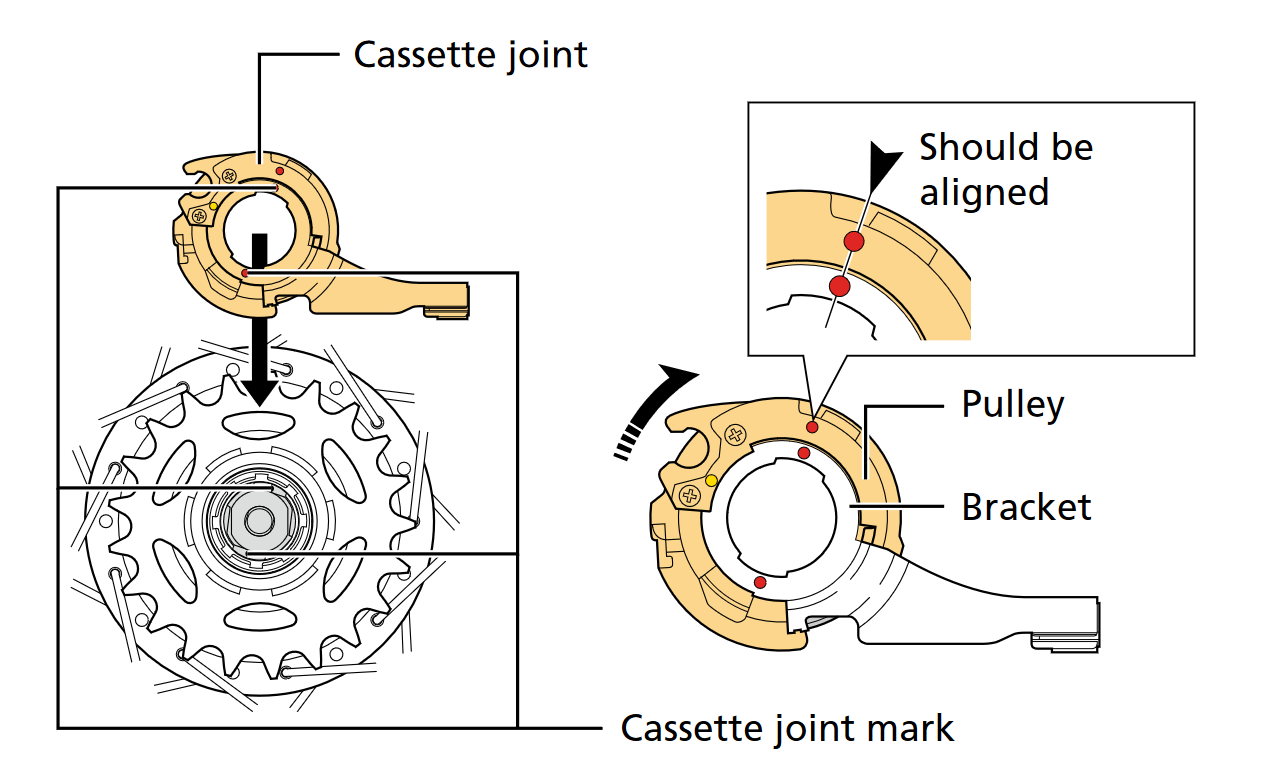

a note on locknuts
You don’t really want to tighten the locknuts on the Alfine 8 too much - it’ll throw off the fitment of the pulley bracket on the one side, and simply put a lot of pressure and friction on the hub on the other side. Reasonable hand tight is fine, the thing is actually held together by the frame anyway, it’s not going anywhere once installed.
Also, this bike has a 135mm rear dropout space, which means the stock Alfine 8 fits great. If you happen to have 130mm spacing, as I did in my previous iteration of this bike, you can grind 2.5mm off each locknut to make the Alfine 8 the proper size, it’s not that hard. Just make sure to grind 2.5mm off each locknut (one is larger than the other, stock), so that the hub remains centered. I went ahead and bought a couple sets of locknuts with the hub so that I could have spares, some ground and some stock.
frame dimensions
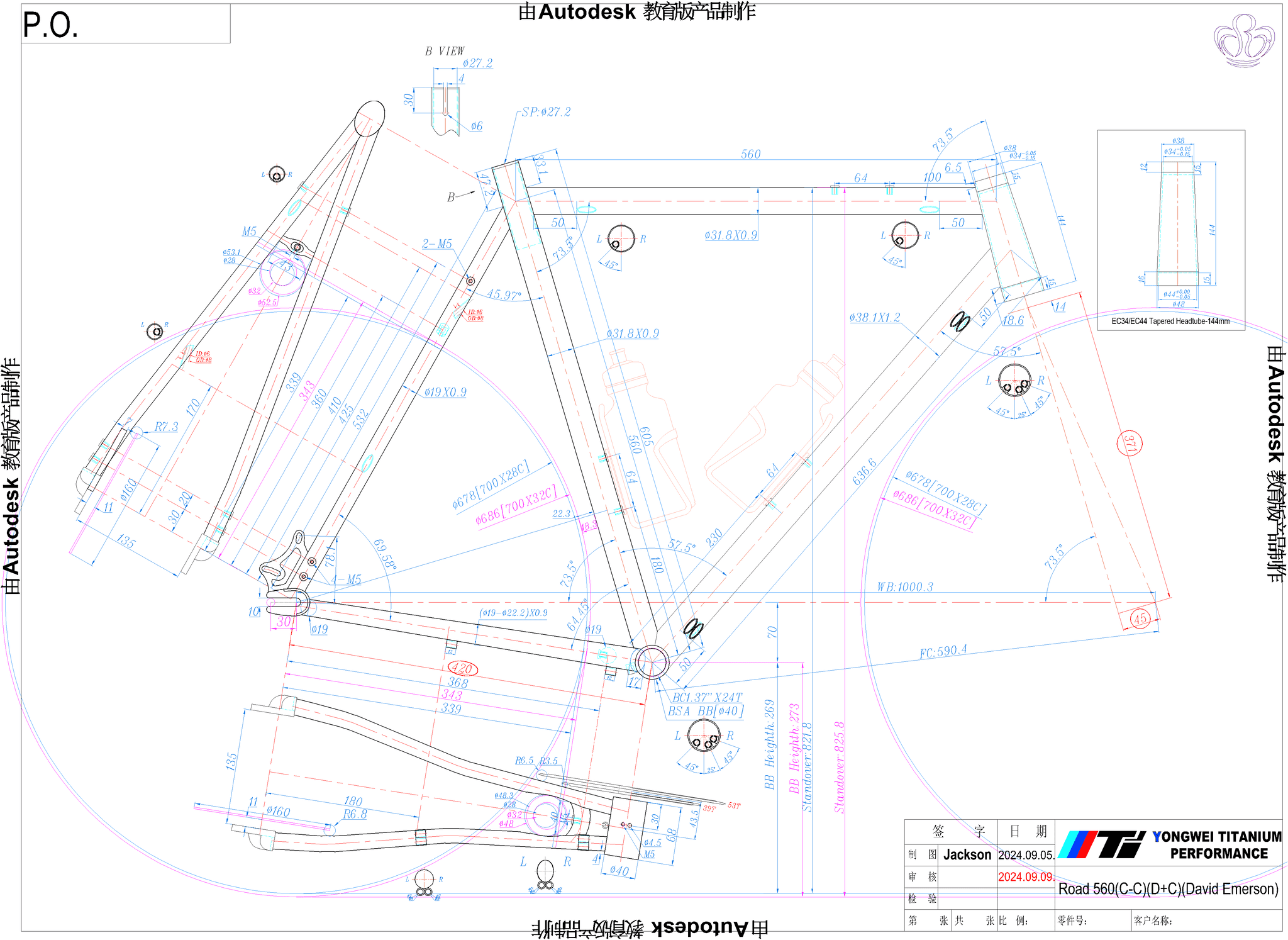
| measurement | value |
|---|---|
| seat post interior ø | 27.2 mm |
| headtube top interior ø | 34 mm |
| headtube bottom interior ø | 44 mm |
| headtube length | 144 mm |
| standover height | 825.8 mm |
| bottom bracket height | 273 mm |
| seat tube angle | 73.5° |
| top tube length | 560 mm |
| seat tube length | 560 mm |
| down tube length | 636 mm |
| dropout width | 135 mm |
| tire clearance | 32 mm |
| chain line | 43.5 mm |
| top tube angle | absolutely freaking level like it should be |
frame material
The frame is made of a titanium alloy called 3Al-2.5V. This alloy is 95% titanium, 3% aluminum, and 2% vanadium. As a bike frame material, titanium works well for me.
- It is not as light as carbon, but it has a much longer riding lifespan, and requires less specialized maintenance routines, such as very careful torque application in fasteners, or friction pastes.
- It is heavier than aluminum, but has a longer riding lifespan, and slightly better corrosion resistance.
- It is lighter than steel, but about as strong, and features far greater corrosion resistance.
3Al-2.5V titanium properties
| property | value |
|---|---|
| density | 4.48 g/cc |
| hardness | 70 (Rockwell B) |
| tensile strength, yield | 500 MPa |
| fatigue strength | 280 MPa |
4130 steel properties
| property | value |
|---|---|
| density | 7.85 g/cc |
| hardness | 92 (Rockwell B) |
| tensile strength, yield | 435 MPa |
| fatigue strength | 320 MPa |
7005-T6 aluminum properties
| property | value |
|---|---|
| density | 2.78 g/cc |
| hardness | 59 (Rockwell B) |
| tensile strength, yield | 290 MPa |
| fatigue strength | 150 MPa |
issues
I keep notes on what to change for next time here, as I did with the previous iterations of this bike. No one of these would precipitate a rebuild, but if I were to rebuild for some other reason, I will incorporate fixes to them.
- Cable routing with zip ties is inelegant. It was necessary here because I forgot to design in housing mounting clips on both chain stay bottoms (only one of them has mountings). The zip ties work well, to be clear, they’re just not as elegant as integrated mountings.
- I don’t have a good way to plug the unused cable routing ports on the bike. I might specify that they be threaded at the ends or something so I can use a bolt to cover them in the future. I like having the number of routings I have, since I may use them in the future, but I would prefer an elegant way to seal them when not in use.
- I am seriously tempted to have some drilled portions of the rear seatstays for LED integration. I would love to make the next iteration of this bicycle a crazy flashing circus. I’ll have to think through the effect on rigidity, but it seems like a few 3mm holes wouldn’t be all that bad, and you can get some really bright SMDs in that space nowadays, wired internally to a battery stashed somewhere in a tube. Just an idea.
photos
frame
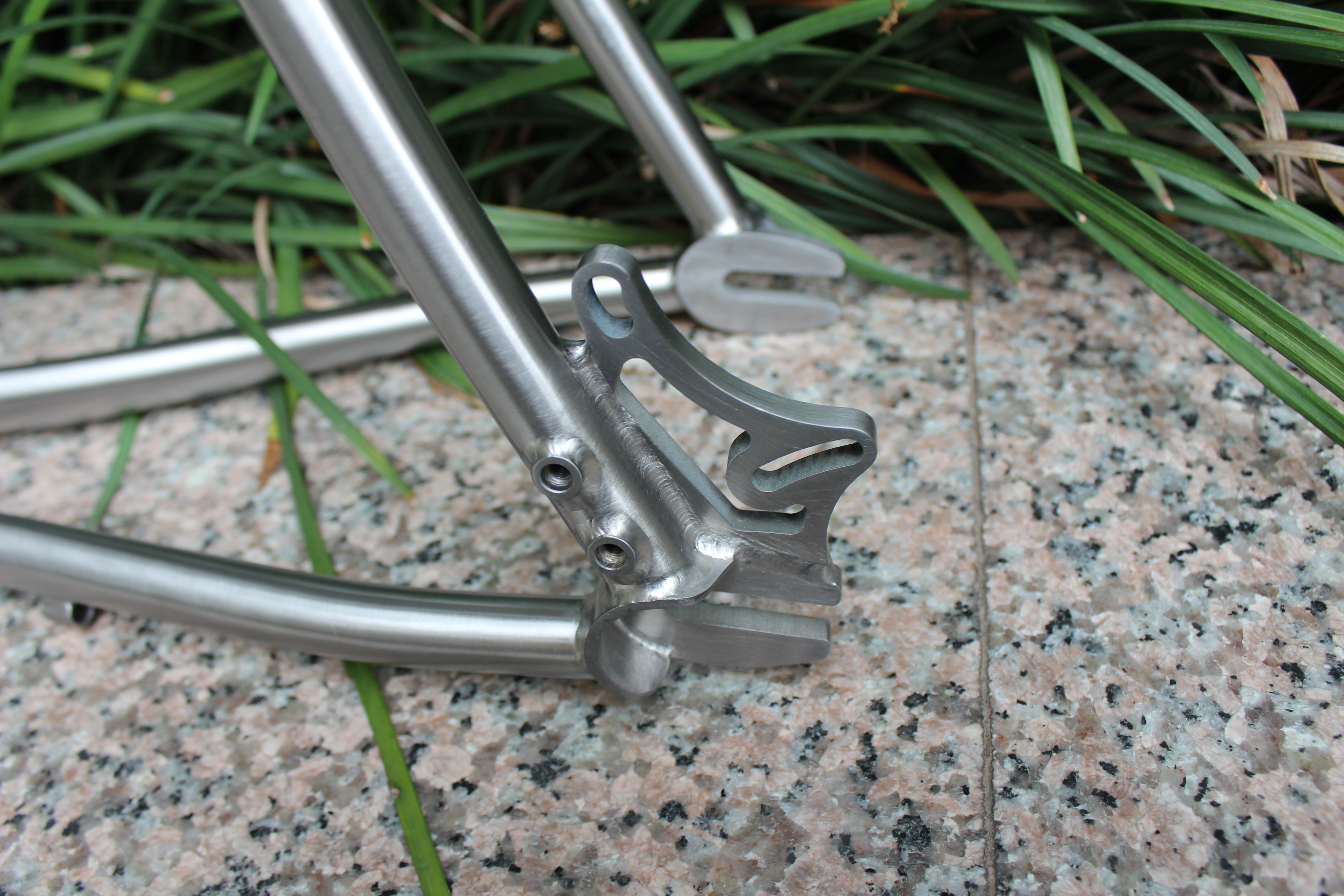
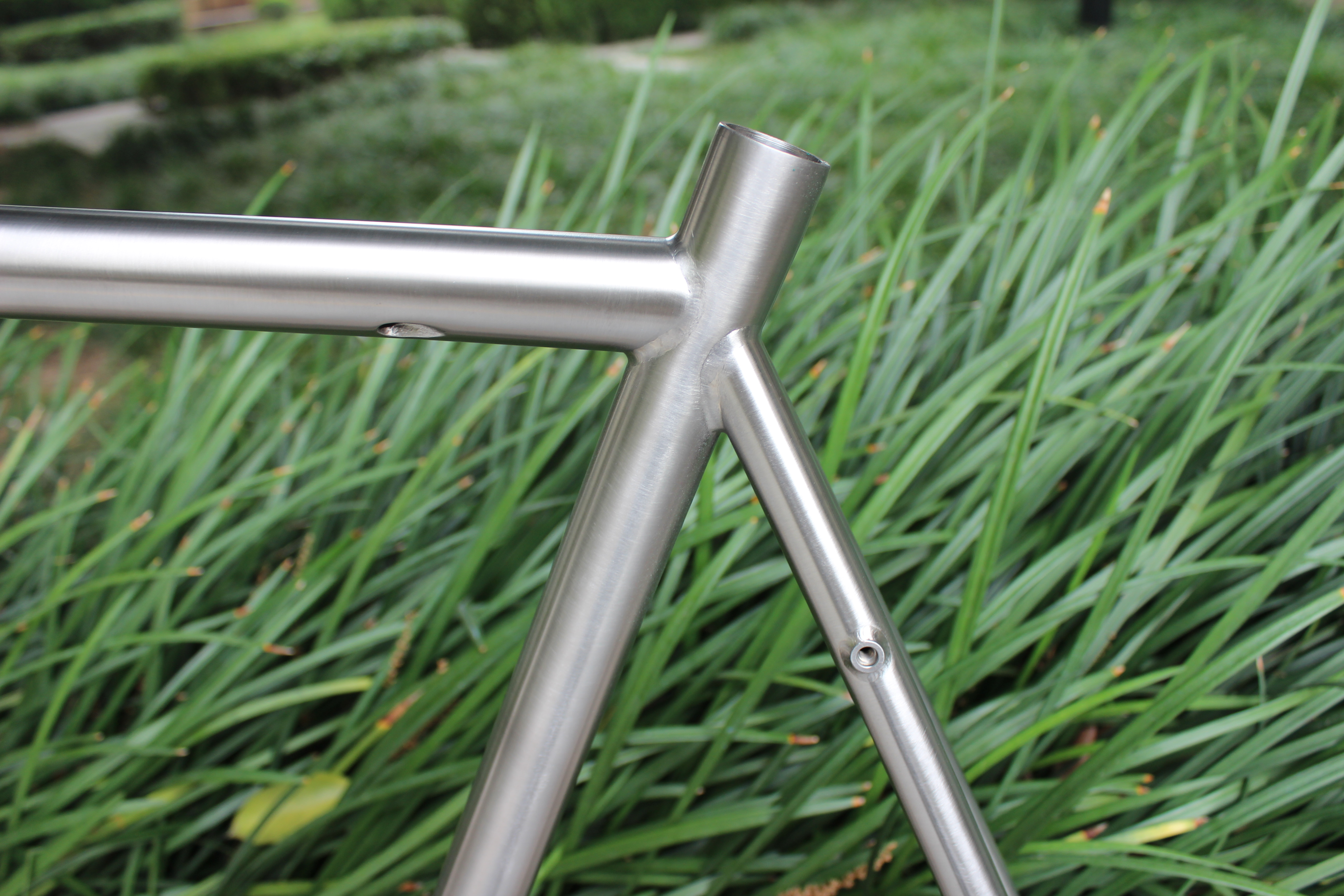
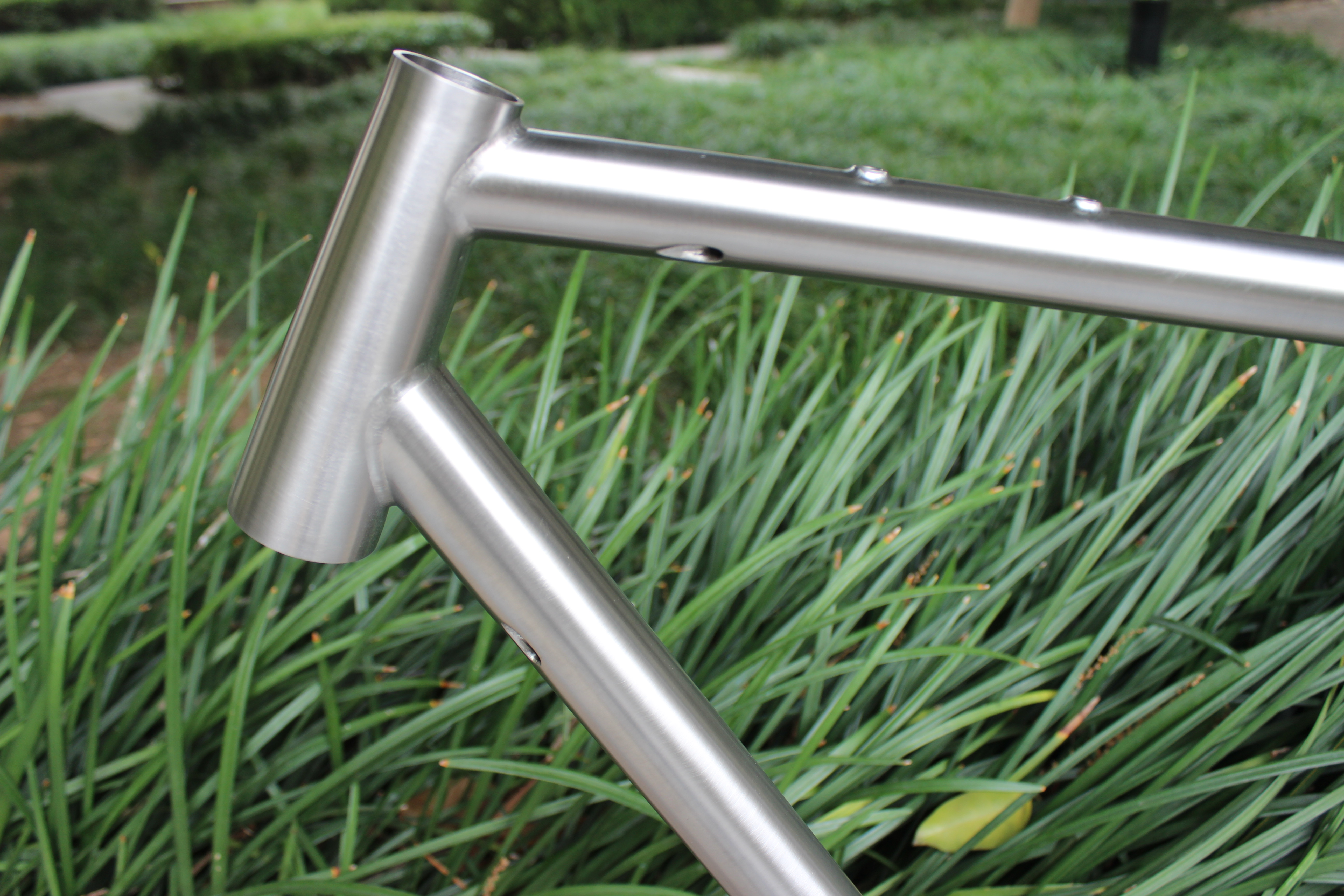
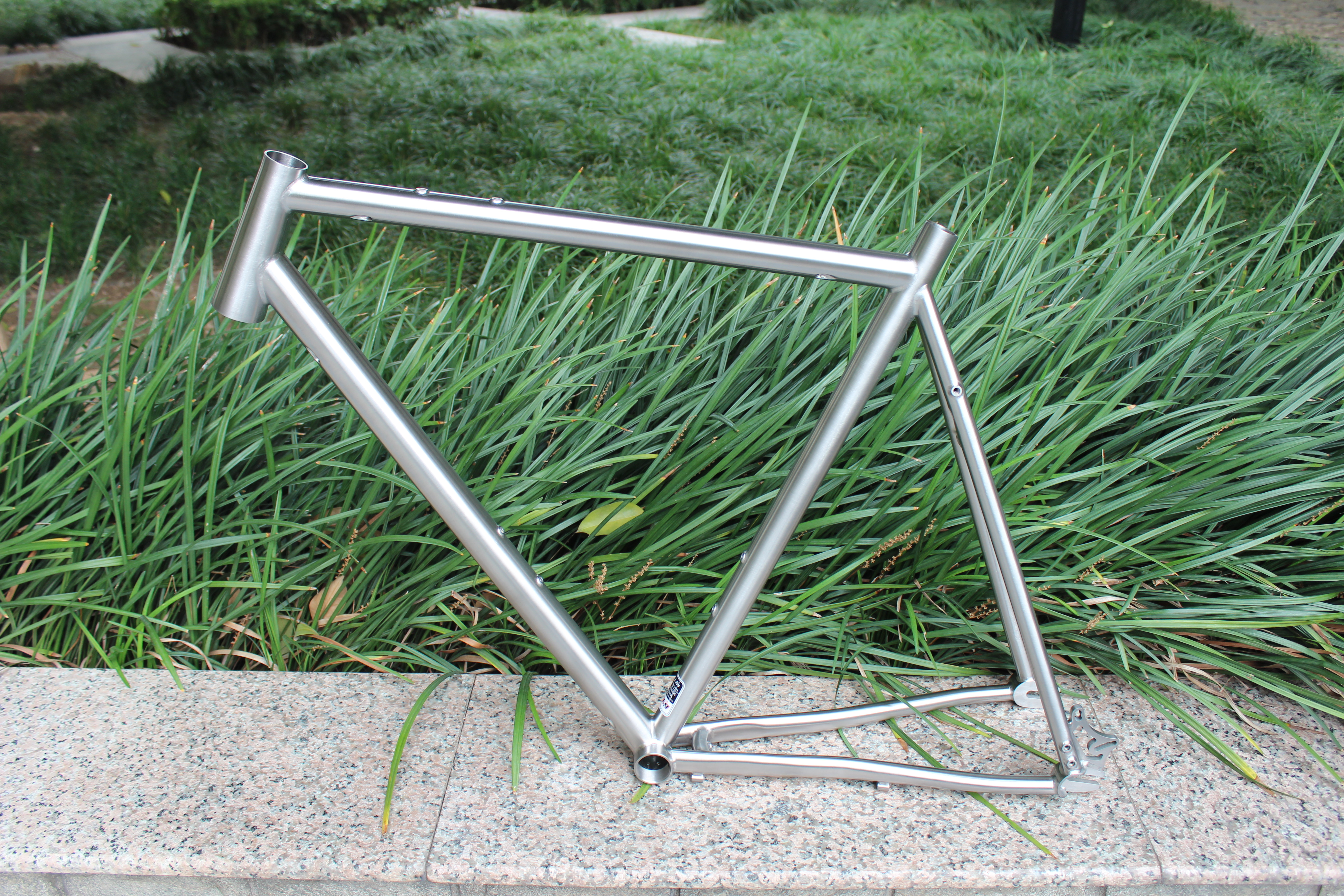
build
Build commenced on 28 October 2024.

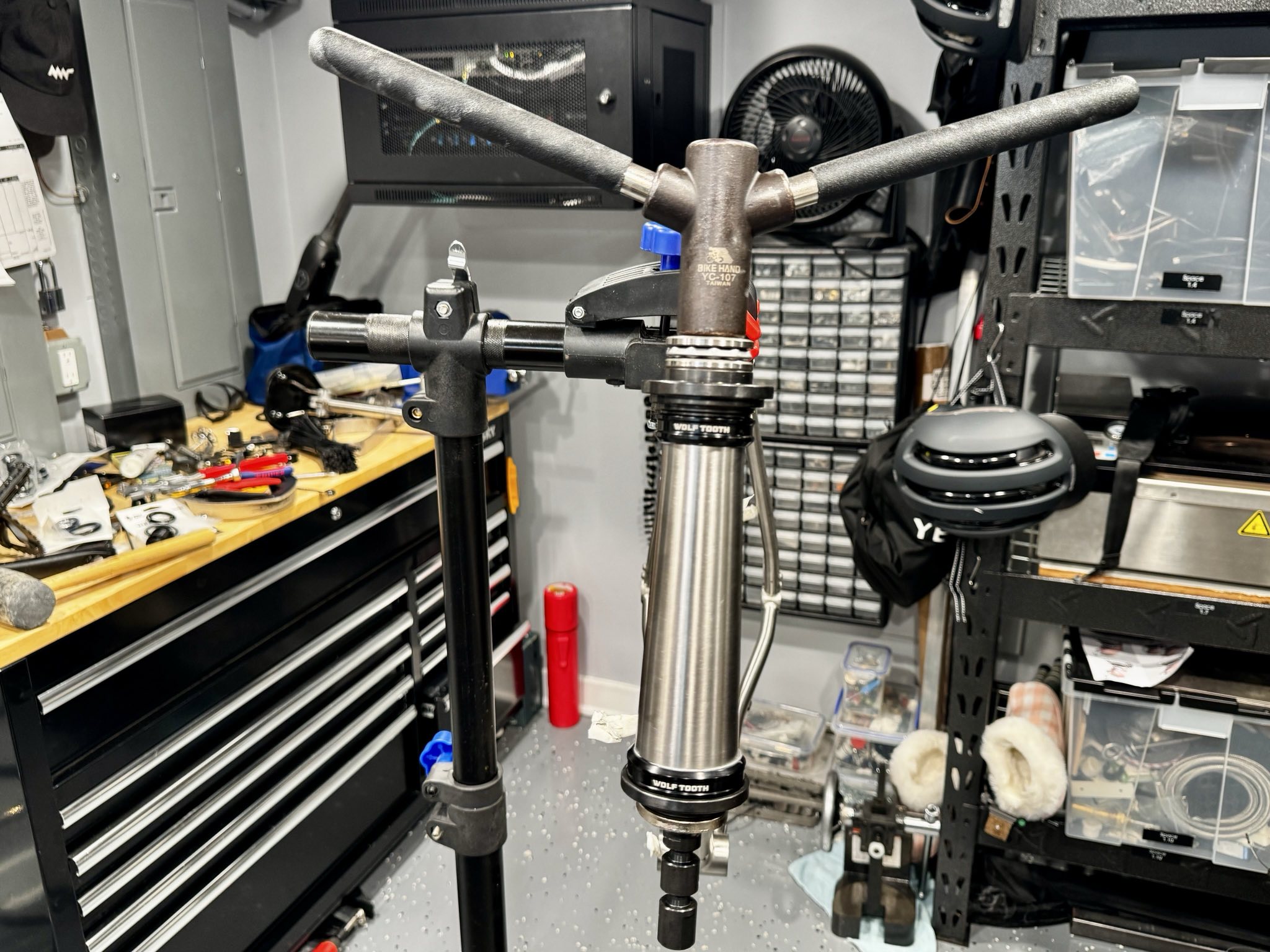
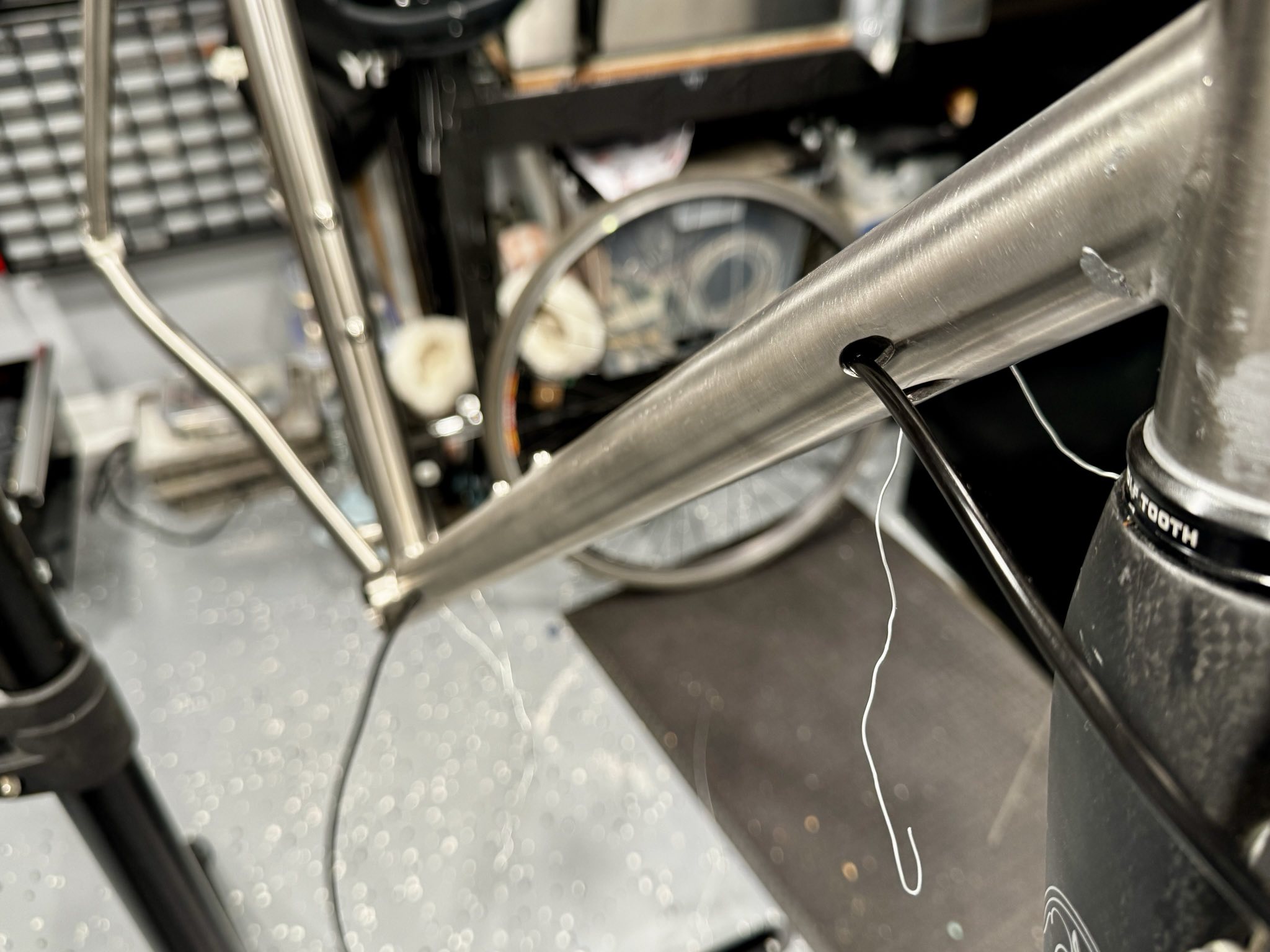
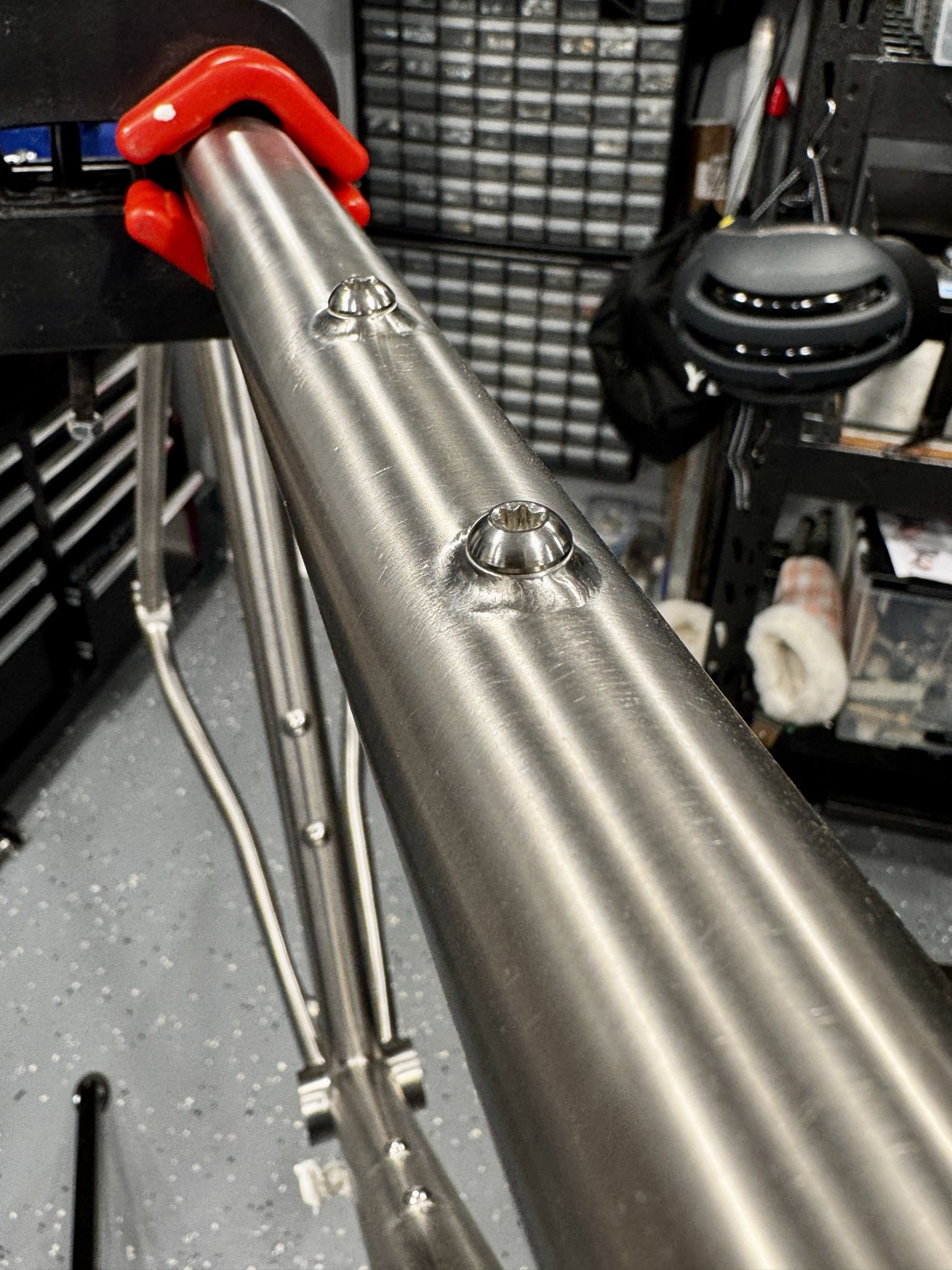
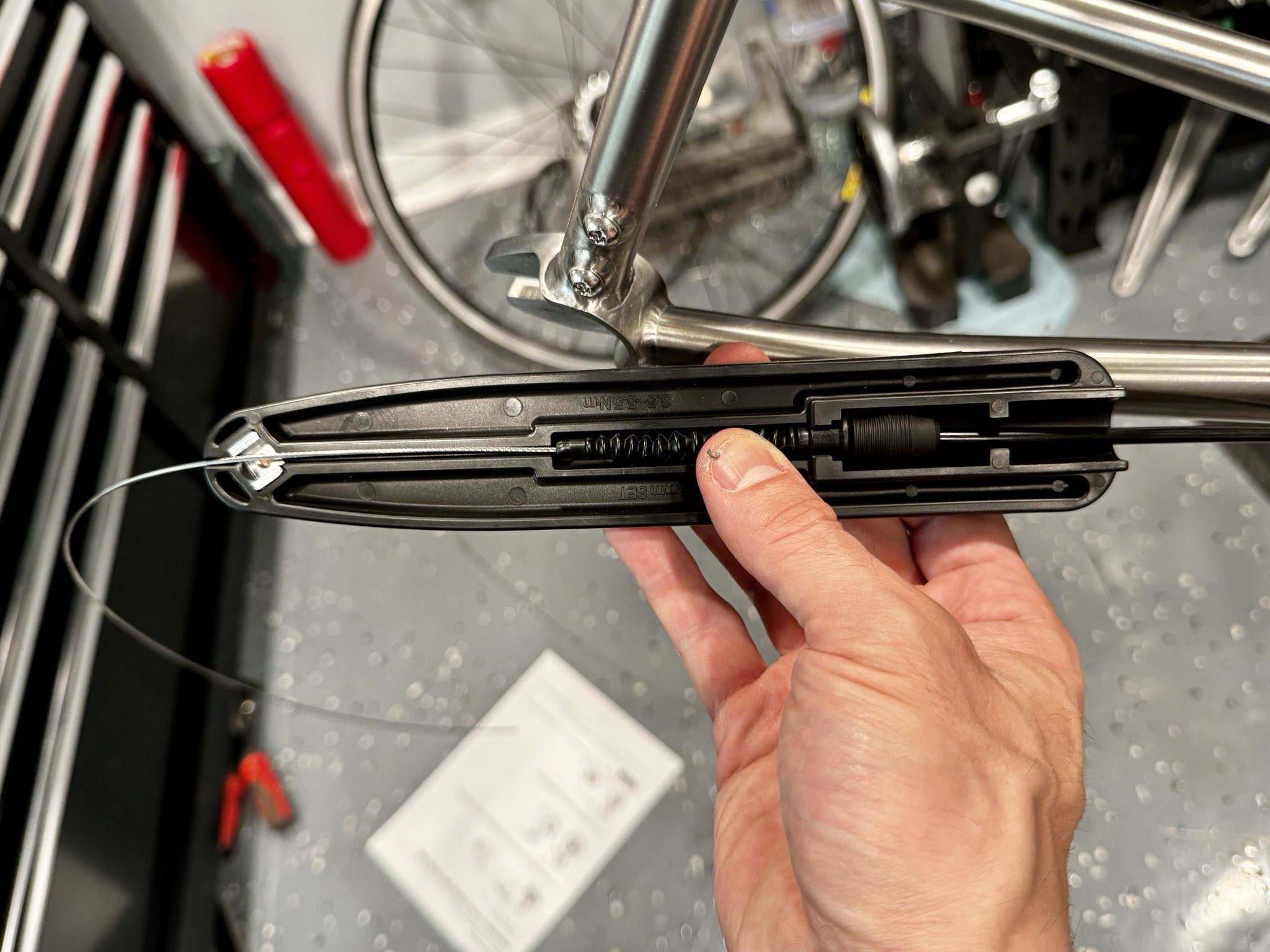
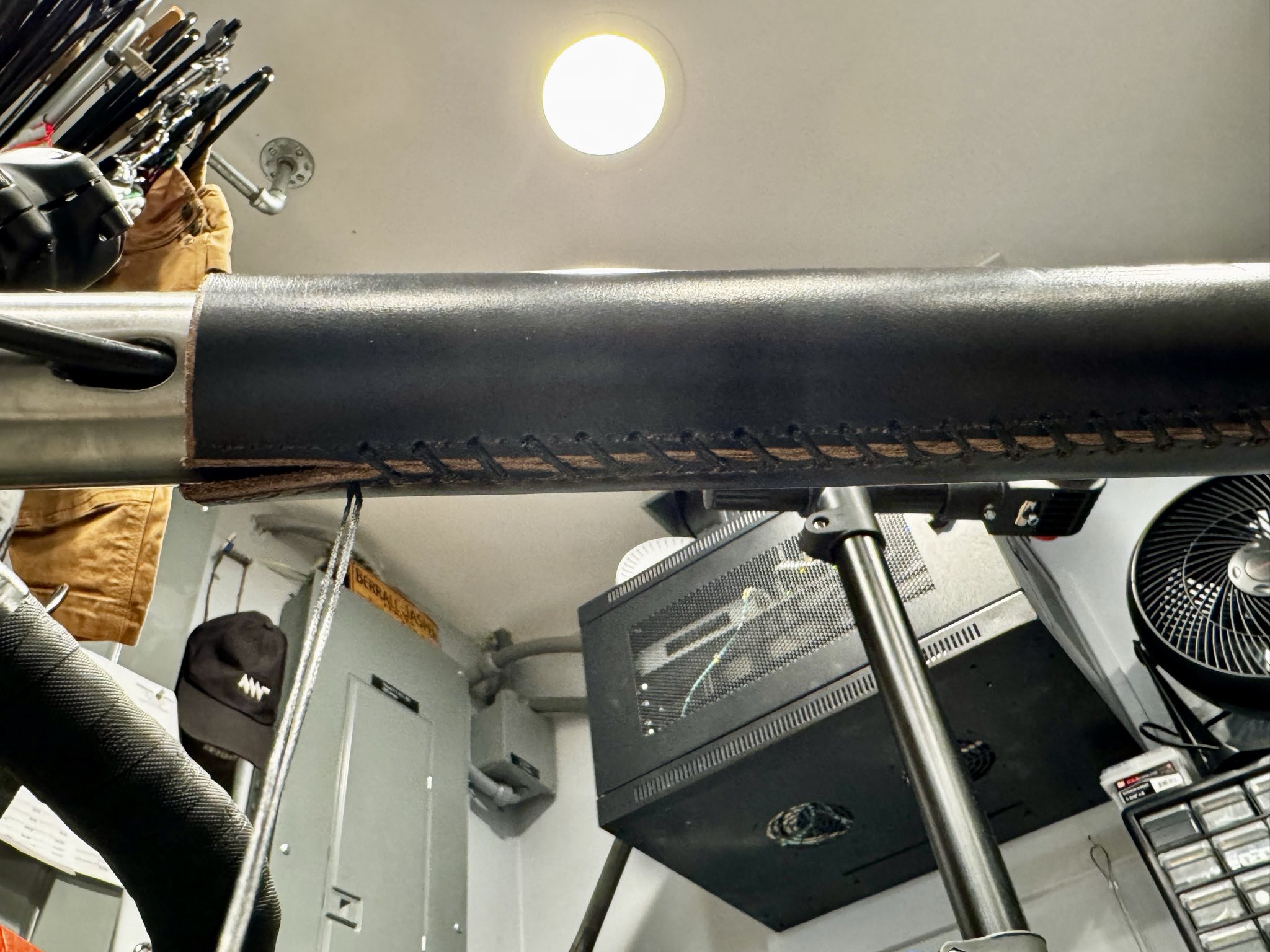
complete
Build finished 29 October 2024, and the bike commuted to work that day.
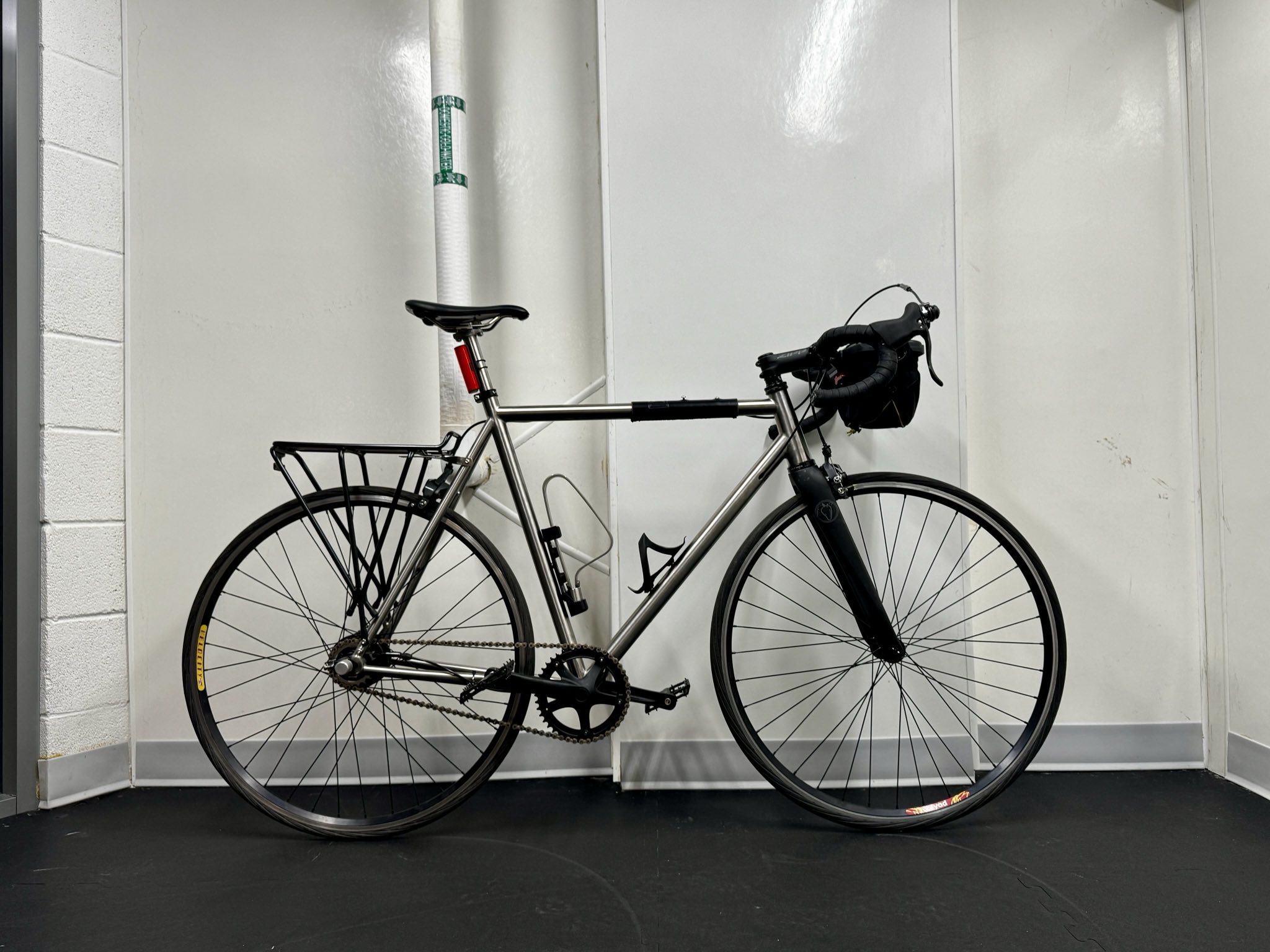
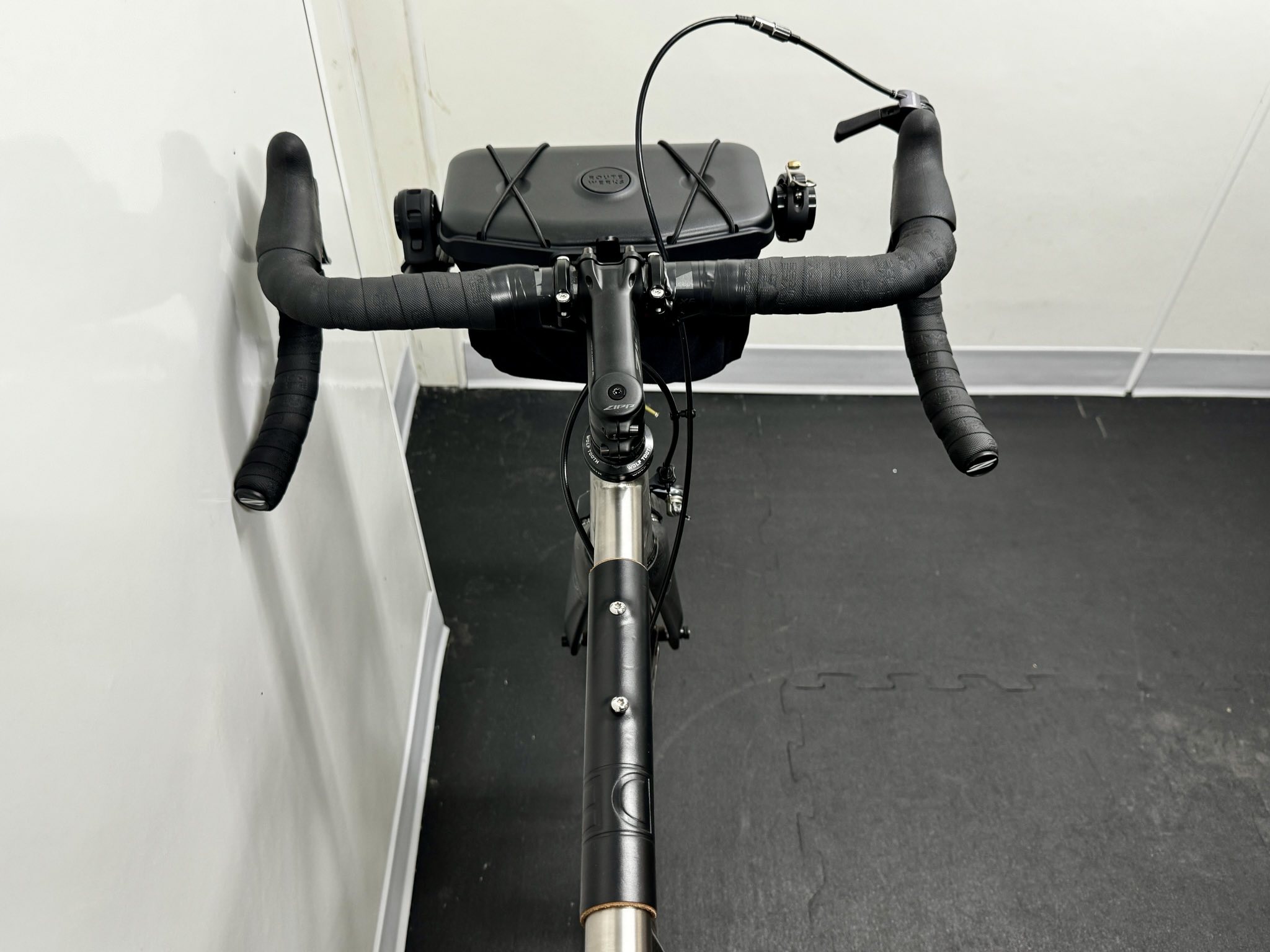
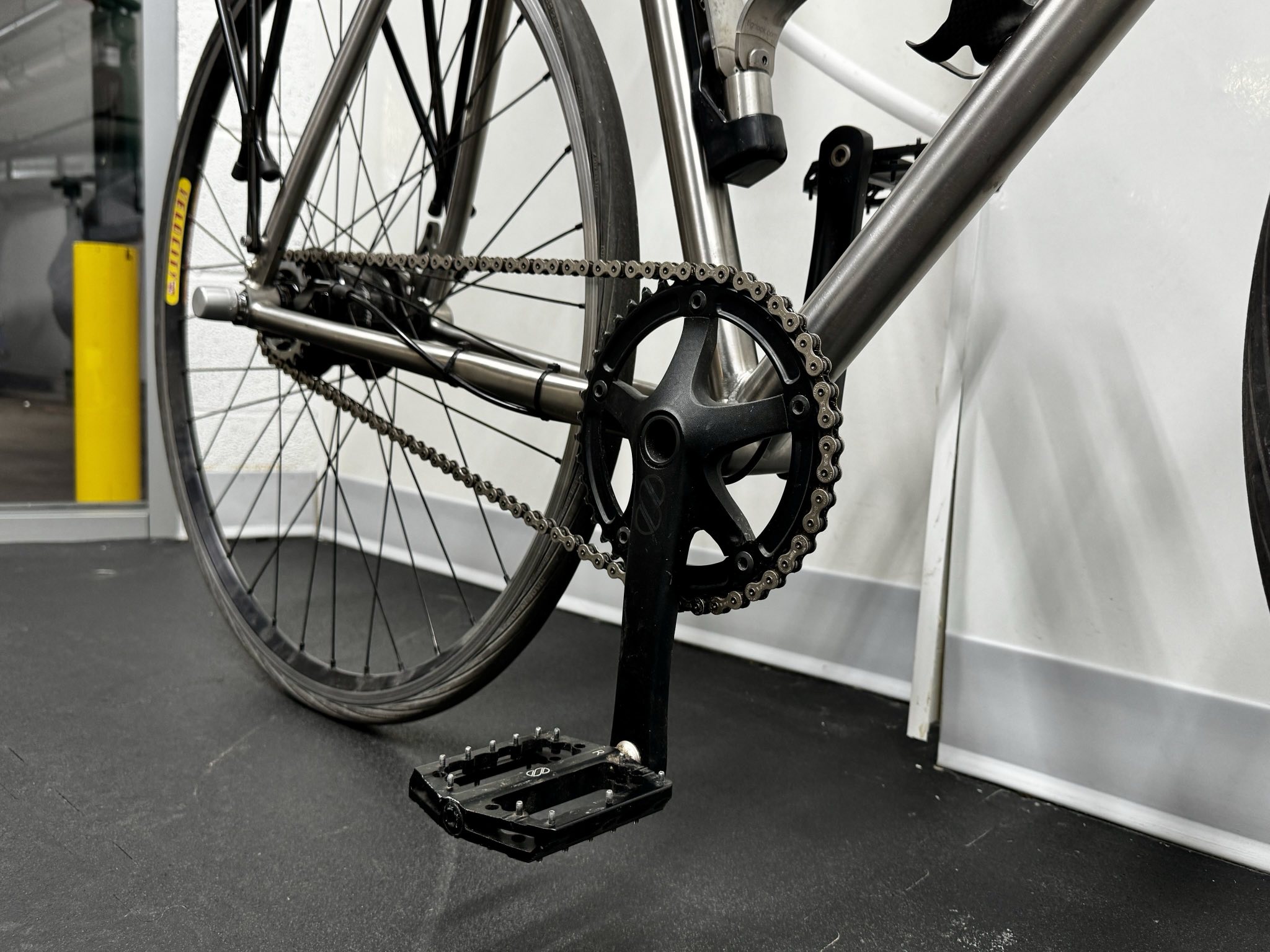
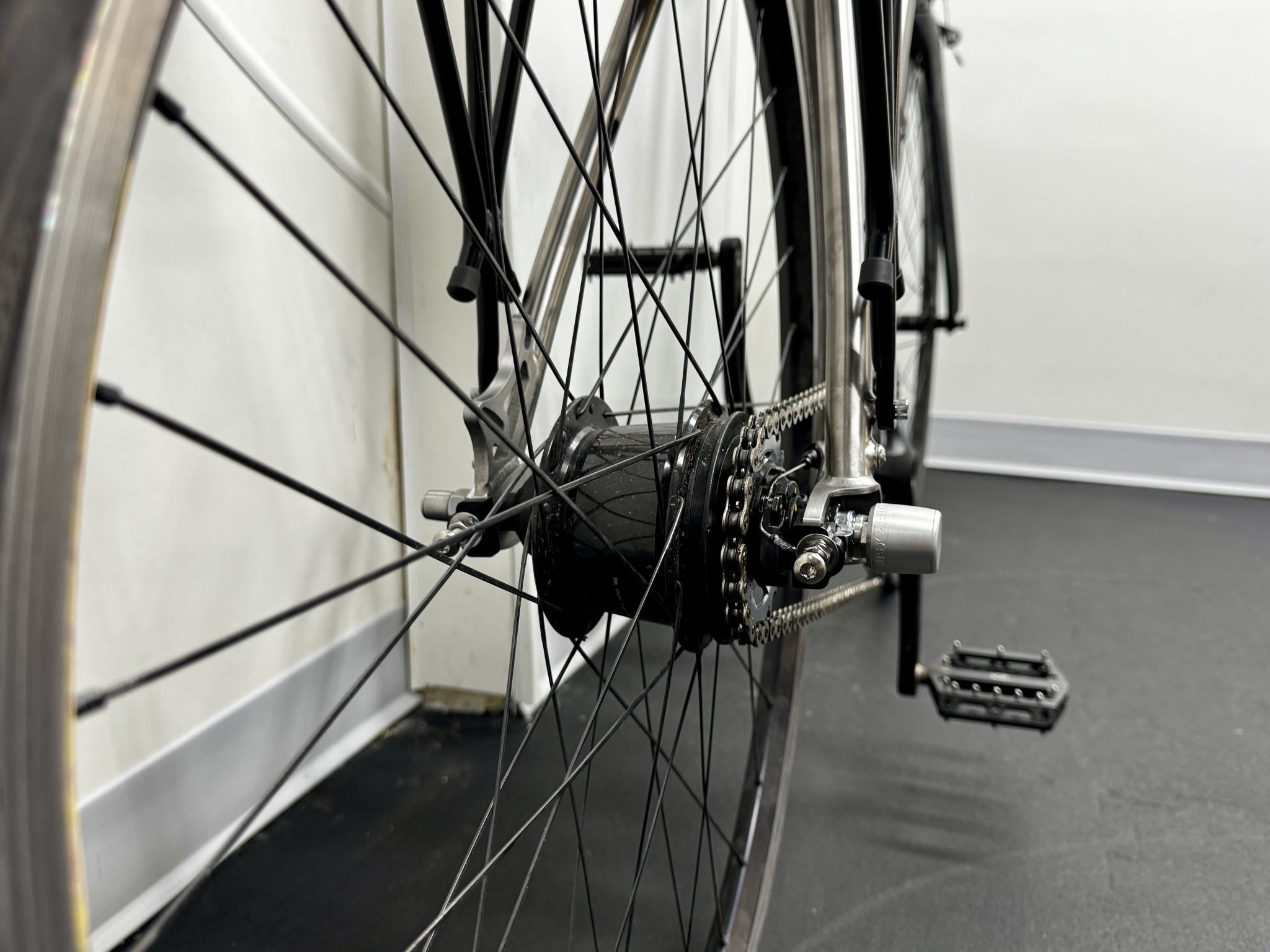

home | about | github | mastodon
epoch
1766167093